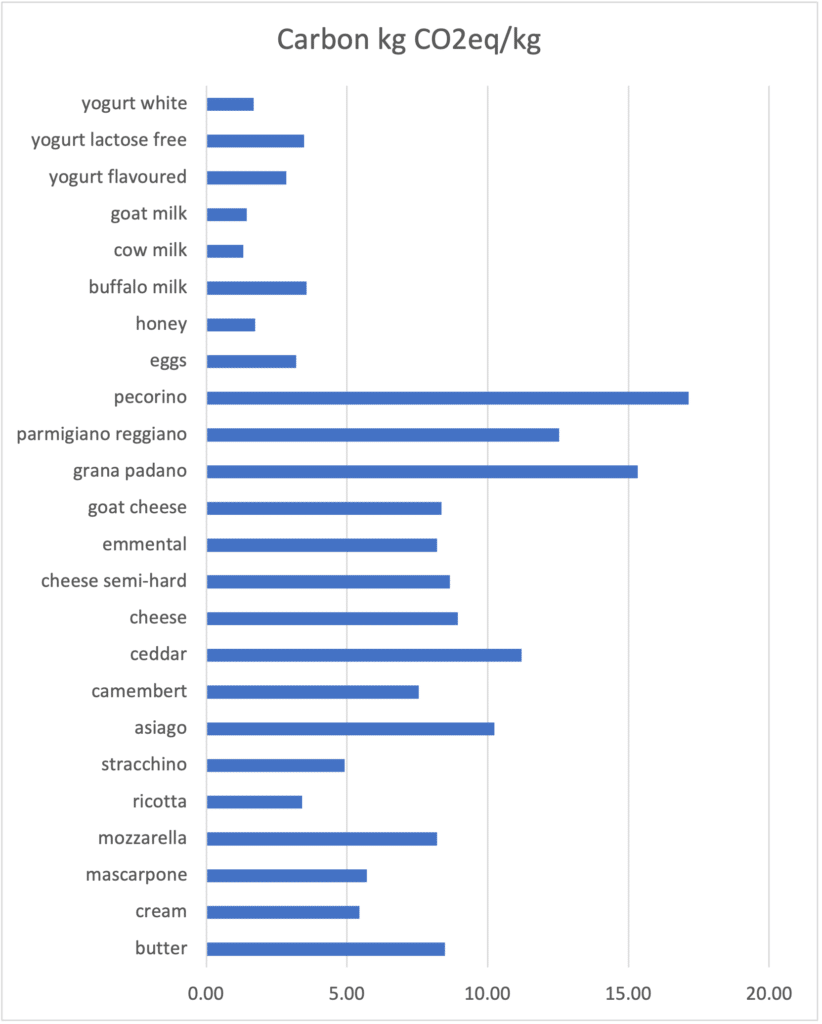Introduction – Carbon Footprint Of Dairy, Cheese and Other Animal Products

Carbon footprint of dairy, cheese and other animal products – different products are given below including honey from bees. Data was obtained from caloric values per kg of each meat and also a study by researchers Petersson and Castaldi 2021. We will present the data in both table and chart form. Carbon intensity must be estimated by considering the process of production. There are not technologies that measure it directly. Because each study estimates carbon intensity differently, there will be discrepancies between values given here and elsewhere on this site. Consider averaging over multiple sources to get the most accurate estimate.
Dairy is like meat, quite carbon intensive. Its main attributes are high caloric content consisting of sugars and fats but low in protein unlike meat. Cutting out cheese and butter is an effective way to reduce carbon emissions.
Go here for all other food categories and the carbon footprints.
Carbon Footprint Of Dairy, Cheese And Other Animal Products – Table
| Food item | Carbon kg CO2eq/kg |
| butter | 8.48 |
| cream | 5.45 |
| mascarpone | 5.70 |
| mozzarella | 8.20 |
| ricotta | 3.40 |
| stracchino | 4.92 |
| asiago | 10.24 |
| camembert | 7.55 |
| ceddar | 11.21 |
| cheese | 8.93 |
| cheese semi-hard | 8.65 |
| emmental | 8.20 |
| goat cheese | 8.35 |
| grana padano | 15.34 |
| parmigiano reggiano | 12.54 |
| pecorino | 17.15 |
| eggs | 3.20 |
| honey | 1.74 |
| buffalo milk | 3.57 |
| cow milk | 1.31 |
| goat milk | 1.44 |
| yogurt, flavoured | 2.85 |
| yogurt, lactose free | 3.47 |
| yogurt, white | 1.69 |
Carbon Footprint Of Dairy, Cheese And Other Animal Products – Chart/


Anne Lauer
Anna Lauer is a writer, gardener, and homesteader living in rural Wisconsin. She has written for Mother Earth News, Grit, and Hobby Farms magazines. Anna is writing a new book about growing your food for free and an ultimate guide to producing food at little to no cost. When she’s not writing or gardening, Anna enjoys spending time with her husband and two young daughters.
